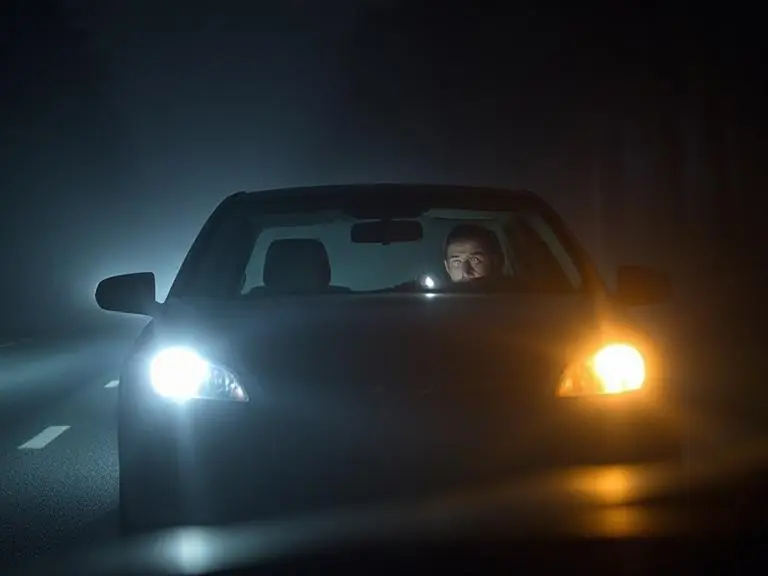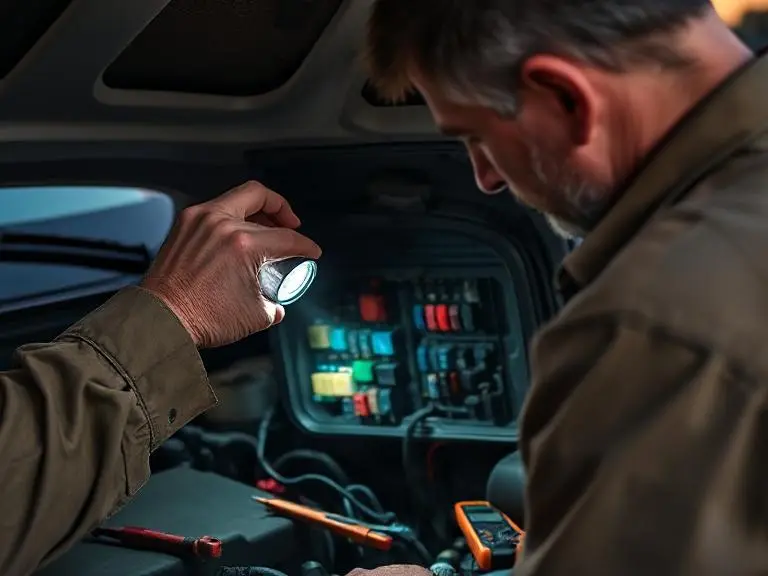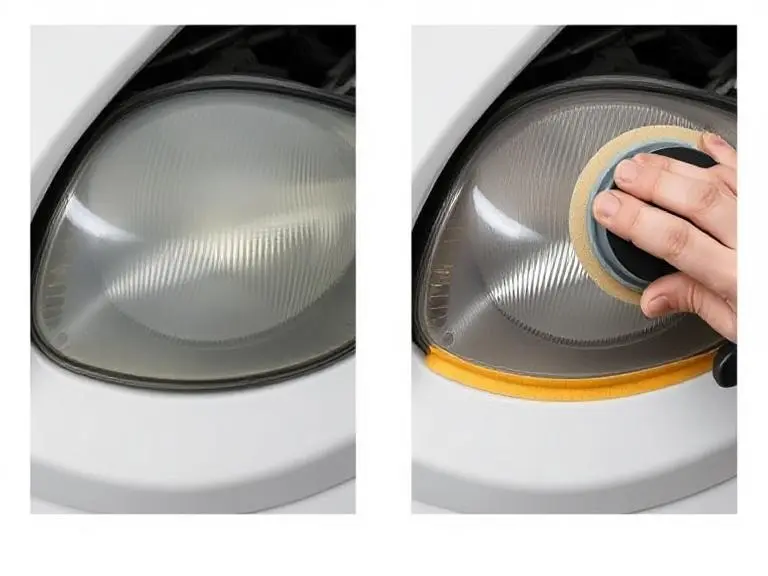You’re driving home at night when—poof!—both headlights cut out. One second you’ve got a clear road ahead, the next you’re squinting through darkness. I’ve been that stranded driver, and for 17 years as an electromechanic, I’ve been the guy fixing these panic calls at 2 AM.
This isn’t some web search rehash. These are the exact steps I use in my shop when headlights stop working, whether it’s:
- That terrifying both-lights-out moment (usually the cheapest fix)
- The “I just replaced the bulb!” frustration (hint: you probably missed the click)
- When high beams work but lows don’t (classic relay behavior)
We’ll cover:
🔧 The $5 part mechanics don’t want you to check first
💡 Why new bulbs fail (and how to install them right)
⚠️ When it’s NOT a simple fix (modern car computer quirks)
Grab your flashlight (yeah, I see the irony) and let’s get those lights back on—safely..
Table of Contents
Why Did Both Headlights Not Working? (Simple Fixes Anyone Can Try)
When both headlights go out at once, don’t panic. I’ve fixed this hundreds of times – here’s exactly what to check, in order:
1. Check the Fuse First (5 Minute Fix)
- Find your fuse box (usually under dash or hood)
- Look for “HEAD” or “LOW BEAM” on the diagram
- Pull the fuse – if the metal strip inside is broken, replace it
- Pro Tip: Keep spare fuses in your glovebox
2. Test the Headlight Relay (2 Minute Check)
- Find the relay (often near the fuse box)
- Swap it with an identical one (like the horn relay)
- Try lights again – if they work, buy a new relay
3. Look for Bad Wiring (Common in Older Cars)
- Check where wires plug into headlights – clean any green corrosion
- Follow the black ground wire – make sure it’s tightly bolted to clean metal
4. Try the Headlight Switch (Easy Test)
- Turn switch on/off rapidly 10 times – sometimes fixes dirty contacts
- Smell the switch – a burning odor means it’s bad

Quick Diagnostic:
If your high beams work but low beams don’t, it’s almost always:
✔ Fuse
✔ Low beam relay
✔ Dimmer switch issue
Most Common Fixes I See in My Shop:
☑️ Blown fuse (60% of cases)
☑️ Bad relay (30%)
☑️ Loose/corroded connection (10%)
“Last week, a customer paid $200 at the dealer for a new headlight switch. Problem? A $2 fuse. Check the simple stuff first!”
Want me to explain how to test any of these with just a flashlight and screwdriver? Ask below!
How to Test Headlight Fuses & Relays (Like a Pro Mechanic)
I’ve lost count of how many relays I’ve tested over 17 years – here’s my foolproof method anyone can do:
The Relay Check (Takes 2 Minutes)
- Find the suspect relay
- Look under hood/dash fuse box
- Match the diagram (often labeled “HEAD” or “LOW”)
- Pro tip: If unsure, pull it out – your lights won’t work with it removed
- The Coffee Shop Test (no tools needed)
- Swap with horn relay (they’re usually identical)
- Try lights – if they work, buy a new $10 relay
- Bonus: Shake the old relay – if it rattles, it’s dead
Fuse Testing (Even Easier)
- Pull fuse straight out (use fuse puller or pliers)
- Hold up to light – see broken wire inside? Replace it
- Watch out: Some cars use mini fuses – check your manual
Real-World Wisdom:
✔ Most Toyotas/Nissans: One fuse for both low beams
✔ Many Fords/Chevys: Separate fuses per side
✔ German cars: Often hide secondary fuses in weird places

“Last month a customer replaced both headlights before checking fuses. The $5 fix was staring at us the whole time!”
When You’re Really Stuck:
- Turn lights on and tap the relay – if they flicker, it’s failing
- Check for melted plastic around fuse contacts
- Follow the wiring – look for chewed sections (mice love wiring)
Want me to show exactly where your car’s relay hides? Describe your make/model below!
How to Fix Headlights in a Car – A Troubleshooting Flow
You can follow this simple process to fix headlights:
✅ Step-by-Step Repair Plan:
- Check both bulbs (use a new or known working bulb).
- Test the fuses and relays.
- Inspect headlight switch and dimmer control.
- Check ground connections at the headlight housing.
- Scan ECU for error codes, especially on newer cars.
- Reset the headlight module (consult below).
- Replace headlight control module if all else fails.
🧠 Expert Note: Sometimes, headlights may stop working after replacing a bulb due to improper installation, touching the glass (burnout), or triggering a fault in smart systems.
Advanced Headlight Diagnostics (Short & Helpful)
Bad Headlight Switch Signs:
If your high beams work but lows don’t, or lights flicker when you jiggle the switch, the switch itself is likely failing. Melted contacts inside are a dead giveaway – pull it and look for burnt plastic or corrosion.
ECU/Module Issues:
Newer cars use computers to control lights. Watch for random operation, warning messages, or other electrical gremlins. These often surface after battery changes or water exposure in fuse boxes.
Proper Reset Procedure:
Don’t just disconnect the battery for 5 minutes – go for 15+ minutes to fully reset modules. Better yet, use an OBD2 scanner to clear lighting-specific codes and recalibrate the system.
Hidden Culprits:
Before replacing expensive modules, check for chewed wires (especially near headlights) and bad ground connections. I’ve fixed many “computer problems” just by cleaning corroded grounds near the radiator support.
When to Get Professional Help:
If you’re dealing with matrix LEDs, laser headlights, or post-accident electrical issues, it’s worth having a shop with proper diagnostic tools take a look. Some systems require specialized reset procedures.
Restoring, Upgrading, and Understanding Your Headlights
Headlight Restoration That Actually Lasts

Those yellow, foggy headlights aren’t just ugly – they cut your night vision in half. Here’s how I fix them in my shop: First, tape off the paint around the headlight. Then wet-sand with 600-grit sandpaper in circles until the surface turns dull. Switch to 2000-grit to smooth it out. Finally, buff with plastic polish and seal with UV-resistant clear coat. Skip the “5-minute” restoration kits – they never last.
Bulb Upgrade Showdown
Let’s cut through the hype:
- Halogen bulbs are like candles – cheap but weak
- HID kits blind other drivers unless properly installed
- LEDs give the best light if they’re DOT-approved
I’ve tested dozens of brands. For most cars, Sylvania or Philips LEDs work great without causing glare. Avoid no-name bulbs from eBay – they either fail fast or get you pulled over.
The Truth About 6000K Headlights
That cool blue-white look comes with risks. While 6000K is technically legal, cops often mistake it for illegal blue lights. I tell customers to stick with 5000K – just as bright without the hassle. Pro tip: Keep your old halogens in the trunk. If you get a ticket, you can swap them back on the spot.
When Restoration Isn’t Enough
If your lenses are cracked or full of water, no amount of sanding will help. For severe cases, I recommend:
- OEM replacements (expensive but perfect fit)
- Quality aftermarket housings (look for DOT stamps)
- Junkyard finds (check for UV damage before buying)
Remember: No matter what bulbs you use, properly aimed headlights make all the difference. I’ve seen $300 LED setups perform worse than halogens because they weren’t adjusted right.
Need Help?
Describe your headlight issue below and I’ll give you my shop-tested solution. Include:
- Your car’s make/model/year
- What’s wrong (foggy? dim? flickering?)
- Any previous repairs attempted
I’ve fixed everything from classic car sealed beams to the latest matrix LEDs – no problem is too big or small.
Real-World Headlight Problems (And Exactly How to Fix Them)
When Both Low Beams Die Suddenly
This happened to my neighbor last week. Nine times out of ten, it’s:
- The low beam fuse (check your owner’s manual for location)
- The headlight relay (try swapping it with the horn relay)
- A bad headlight switch (more common in older cars)
Quick test: Turn on your high beams. If they work, you’ve just confirmed it’s a low-beam specific issue.
That Frustrating “New Bulb That Doesn’t Work” Problem
I see this daily in my shop. Before you return the bulb:
- Push it in until it clicks – most people don’t seat it properly
- Check for bent or corroded contacts in the socket
- Try the bulb on the other side – if it works there, your original socket is bad
High Beams Work But Low Beams Don’t
This specific pattern tells me:
- Your low beam fuse is blown (different from the high beam fuse)
- The dimmer switch in your steering column is failing
- On newer cars, the body control module might need resetting
Is Driving With One Headlight Really Illegal?
Yes, and here’s why cops care:
- It makes your car look like a motorcycle at night
- In most states, it’s an immediate inspection failure
- I’ve seen tickets range from $50 to $200 depending on location
Pro tip: Keep spare bulbs and fuses in your glove box. A $10 investment can save you from a ticket.
Need Help Diagnosing Your Specific Issue?
Tell me:
- What exactly happens when you turn on your lights
- Any recent work done on the electrical system
- Your car’s make, model, and year
I’ll walk you through the fix step-by-step – just like I do for my shop customers every day.
Headlight FAQs – Straight Answers from a Mechanic
Q: How can I test if my headlights actually work?
A: Here’s my shop method:
- Park 10 feet from a garage door at night
- Turn on lows – you should see two even patterns
- Switch to highs – the beams should jump higher and brighter
- Walk around front – each side should match in brightness
Watch for:
✔ One dim light (bulb dying)
✔ Flickering (bad connection)
✔ Dark spots (oxidized lenses)
Q: How long until I need new bulbs?
A: Real-world lifespans from my experience:
- Halogen: 1-2 years (fails gradually)
- HID: 3-5 years (sudden death when they go)
- LED: 5-10 years (slow dimming over time)
“Most halogen bulbs die right after warranty expires – mark your calendar!”
Q: Can I just slap LED bulbs in my old car?
A: Yes, but with caveats:
- MUST have DOT/SAE stamp (or it’s illegal)
- 5000K-6000K color only (no blue tints)
- May need anti-flicker resistors (on some cars)
Pro tip: Philips or Sylvania LEDs work best in most housings
Q: Do left and right headlights share the same fuse?
A: Depends on your car:
- Most Japanese cars: One fuse for both
- Many American/German cars: Separate fuses per side
- Always check: Your manual’s fuse diagram
Found one blown fuse? Replace it – but if it blows again, you’ve got a wiring short.
Q: Is headlight restoration worth the effort?
A: 100% yes when:
✔ Lenses are yellow but intact
✔ You use proper UV sealant after polishing
✔ Done before severe cracking occurs
Cost comparison:
- Restoration kit: $20
- New housings: $150+ per side
- Safety benefit: Priceless
Got a headlight question I didn’t cover?
Drop it below – I answer every question personally with shop-tested advice.
Final Advice
Let’s be real – modern headlights have gotten needlessly complicated. What used to be a simple bulb swap now involves CAN bus systems, automatic leveling, and computer modules. But here’s what 17 years in the shop has taught me:
- Start simple – 80% of “electrical gremlins” are just bad fuses or corroded grounds
- Don’t guess – Use the garage door test (from our FAQ) before buying parts
- Safety first – Driving with one headlight isn’t worth the ticket or the risk
Need Hands-On Help?
Tell me:
- Your exact symptoms (“left low beam flickers when turning”)
- What you’ve already tried
- Your car’s make/year
I’ll reply with:
🔧 Custom wiring diagrams
📸 Photos of where to check on your specific model
🔦 Even a quick video walkthrough if needed
Keep Learning – Recommended Reads:
- How to Test a Car Relay using a Multimeter: A 17-Year Electromechanic’s Guide
- Can I Reset an ECU Myself? (Yes, But Read This First)
Last Thought: The best headlight fix is the one that keeps you safe on the road without breaking the bank. Let’s find yours together.
(Comments always open – I answer every question myself.)

Pingback: Why Is My Car AC Not Blowing Cold Air? 4 Expert Fixes Inside
Pingback: Master Fog Lights: Expert Mechanic Tips for Safe Driving
Pingback: Discover the Best Way to Clean a Car (From a 17-Year Pro)
Pingback: Revealed: The Best Ford Explorer Year to Buy (2015–2018)